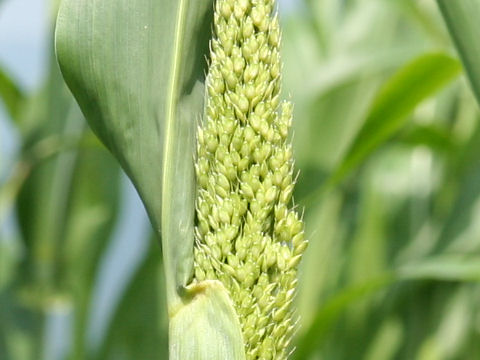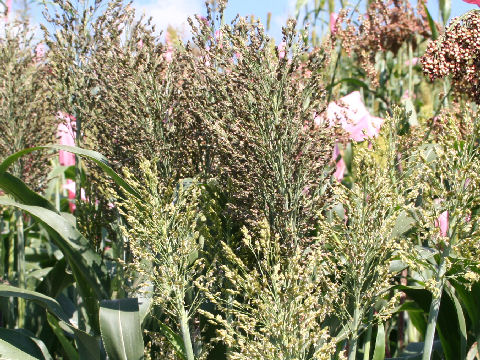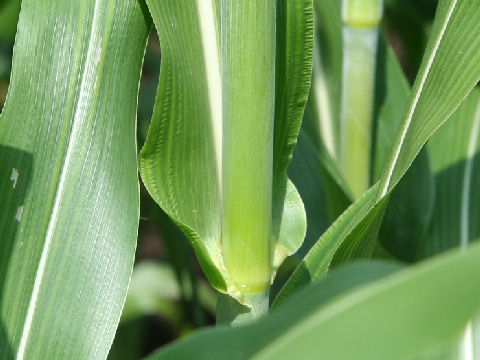
|
The Kaoliang (Sorghum nervosum) belongs to Poaceae (the Grass family). It is an annual herb that is a type of "sorghum" that originated in tropical Africa and has adapted to the cold climate of northeastern China. It was introduced to Japan during the Muromachi period (1333-1573). The stems are erect, and the broad linear leaves are alternate and enfold the stem. The midrib of the leaves is white. From summer to fall, it produces a raceme of flowers at the top of the stem. The seeds are used to make rice, porridge, dumplings, etc., and are also used to make maotai wine and fen-chiew. In Japan, it is used as a fodder crop and as a pollen parent for F1 varieties, especially because of its excellent low-temperature elongation. F1 varieties include "Suzuho", "Ryujin-wase", and "Natsu-ibuki", which were bred at the Nagano Prefectural Livestock Experiment Station. The varieties in the photo are "Senkinpaku" for the top and 4th-5th, and "Shohaku-koryan" for the rest. In Chinese, it is called "多脉高粱" (duo mai gao liang).
|







